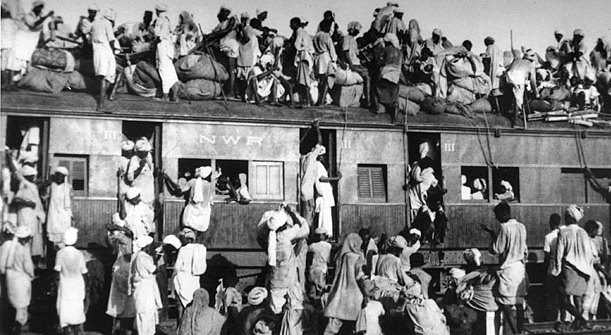India and Pakistan have wildly different stories of how the Partition came about. The stark difference in what they are taught is reflected in the way Pakistani high school student Noman Afzal, according to an AFP report, thinks “traitorous” Hindus are to be blamed for the bloodshed when two nations split. The nationalistic narrative in the textbooks of both nations are to do with official unwillingness to confront the legacy of Partition.
Noman Afzal is not a singular case. Across the border ie in India, Mumbai schoolboy Triaksh Mitra learnt how Mahatma Gandhi fought for unified India while the Muslim League decided to create their own nation in accordance with colonial empire. “But what they hadn’t really told us was the Muslim side of it,” the 15-year-old Triaksh said of his textbook.
August marks 70 years since the subcontinent was divided into two independent states. The carnage that followed the largest mass migration in history sowed the seeds of bitterness that stays between India and Pakistan today.
Other discrepancies
The Partition is not the only narrative with a perspective influenced by the country’s respective foreign policy. Consider the 1965 war, where both India and Pakistan claim to have won. US and Soviet Union intervened to ensure ceasefire– the result of which was the Tashkent declaration. A Pakistani textbook, according to the Quint, says India “begged for mercy” and “ran to UN for help”. The textbooks in India says that Indian army reached close to Lahore and could have inflicted considerable military loss on Pakistan. Similarly, in the case of 1971 wars, Pakistani textbooks claim that India instigated Hindus in then East Pakistan, while India talks of supporting a “freedom struggle”.
According to experts, from classrooms of New Delhi to Karachi, the skewed portrayals of events is hindering any hope of reconciliation between arch rivals.
There is, however, hope. In 2011, two Pakistani boys Qasim Aslam and Ayyaz Ahmad started the The History project. The idea behind this was to juxtapose Indian version of history with Pakistani one to gain a larger perspective. The birth of this project can be traced back to the time they attended Seeds of Peace conflict resolution camp in Maine, USA in 2005. The camp was a platform for Indian and Pakistani children to hold dialogue.Says Ahmad to the The Scroll:
“What we realised while talking to our Indian friends was that it was very difficult to have a peaceful conversation because both sides didn’t know what the other side had been taught.”
The History Project
The History Project now holds workshops in select institutions across India and Pakistan where students are presented with two narratives side by side– where the accounts merge and deviate. They are encouraged to infer what happened and are protected from biases in the educational system. Ahmad recounts an incident from a school in Pakistan where a girl approached him and said while she understood what he was trying to say, she felt angry everytime Indians were mentioned. Says Ahmad, “The kid really didn’t understand why or where that anger was coming from. How do we fix these issues of hatred and intolerance?”
The History Project has come out with a book called Partitioned Histories: the Other side of the story which marks history (both versions) from 1857 to 1947.
The Other Side of Silence
Another book that gives a more balanced account of the Partition is “The Other Side of Silence” by Indian writer and Partition historian Urvashi Butalia. The book is now also part of the high school syllabus in India. Butalia said such a move to understand Partition beyond nationalistic prism would have been impossible 20 years ago.
Butalia also says that Humayan’s Tomb and Purana Qila were sanctuaries of thousands of Partition refugees. Yet there is not plaque at either of these sites enlightening the public of this.
“We could learn so much, basically learn never to repeat that history, but we don’t memorialise it in any way,” she tells AFP.
